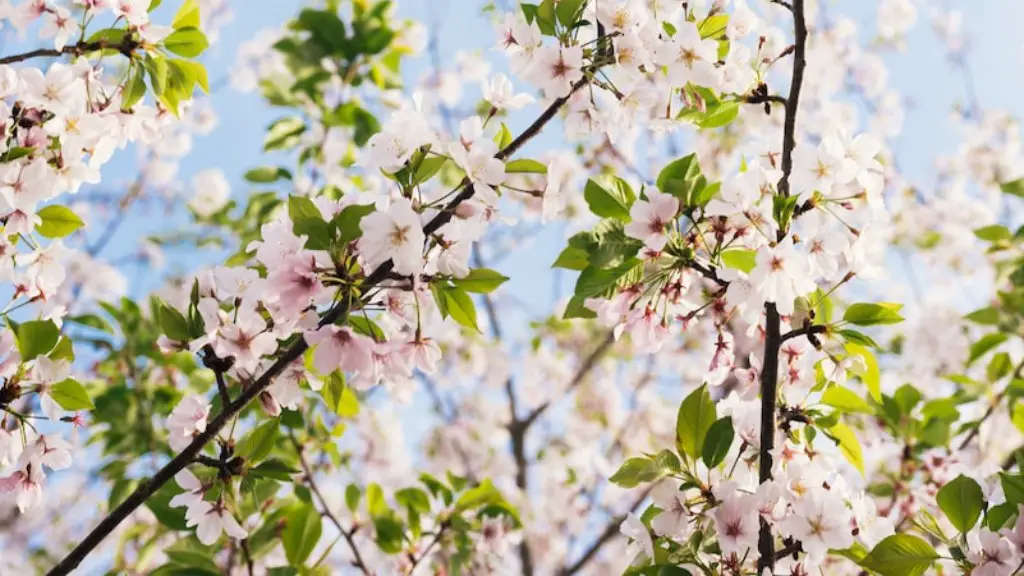Avocados are one of the world’s most popular fruits and are enjoyed in a wide range of cultures and cuisines. They are a great source of mono and polyunsaturated fatty acids, as well as a plethora of micronutrients. However, growing your own avocado tree can be a tricky endeavor. There are certain techniques and recommendations that should be followed if you want to ensure your tree will bear fruit. Here are some strategies on how to make your avocado tree bear fruit.
Be mindful of the planting environment
When choosing a spot to plant your avocado tree, take into account the environment. Look for a well-drained, sunny spot, away from the wind and with access to plenty of water. Soils high in organic matter, such as loam and clay, work best for avocado trees. Make sure to keep the soil moisture content even by watering regularly.
Know the pollination process
Avocado trees normally require two trees planted in the same vicinity to facilitate pollination, since there are two types of flowers on an avocado tree: A type and B type. Both A and B type flowers must be present for successful pollination to occur. If you don’t have two trees nearby, you’ll need to hand-pollinate with a small brush. Make sure to perform this process regularly during the avocado blossom season.
Pay Attention to climate conditions
Avocado trees thrive in particular climates. If you’re in a cold area, consider looking for a variety of avocado that can handle the climate, like Hass, Lamb Hass, or Fuerte. If the temperature is over 100°F, your tree may require more water and shade to prevent dehydration and sunburn. Don’t forget, avocado trees are sensitive to frost, so be sure to protect it during cooler seasons.
Prune regularly
Prune your avocado tree as necessary to keep it healthy and provide enough access to light and air. Look for signs of weak or crowded branches and remove them by cutting back a couple of inches. Make sure to maintain a symmetrical structure. If your tree is looking sparse, consider trimming the lower branches for a denser upper canopy.
Keep a watchful eye
Be vigilant and check your tree regularly for signs of pest or disease issues. If you see signs of possible infestations or disease, take steps to eliminate pests and treat the disease as soon as possible. Also, check the bark of the tree to make sure it is not cracking due to lack of water or dryness.
Use fertilizer
Fertilizing your avocado tree with a balanced fertilizer, such as 8-3-9, during the growing season can help promote healthy growth and flowering. Be careful not to over-fertilize, as this can burn your tree roots and leave it vulnerable to pest infestations. Additionally, fertilizer can help maintain the soil acidity, which helps the avocado tree absorb nutrients.
Harvest wisely
Avocado fruits usually take eight months or longer to ripen, so patience is key. When it is time to harvest, pick the fruits in the morning, when the temperature is cooler. If there is light frost, delay picking until the next day. Remember, picking immature fruits can reduce the number of fruits produced by the tree.
Grafting
Grafting is a process by which a twig from a mature plant is applied to a young shoot on the same species of plant. This can help promote more efficient and consistent flowering and fruiting in the tree. It is a complex process, so it is best to have an experienced grafter do it for you.
Minimize stress
Stress can have a big impact on an avocado tree, reducing its ability to bear fruits. Stress can be caused by extreme temperatures, lack of water, nutrient deficiency and root rot. To reduce this, make sure to monitor and regulate the tree’s environment as best you can. Also, pay attention to the rootstock and shoot-stock when planting and grafting, as these are key factors in successful fruit production.
Prepare for summer
It is important to prepare your avocado tree for summer in order to ensure optimum fruit production. During the hotter months, make sure to keep the soil moist and provide plenty of shade to reduce dehydration. Additionally, check the tree’s roots to make sure they are not overcrowded and that there is proper drainage to prevent root rot.
Intercropping
Intercropping is a technique that involves overlapping the cultivation of two or more crops in the same field. This can help increase soil fertility, reduce pest and disease pressure, and maximize productivity. Legumes like beans, or companion plants like mint, can help boost the avocado tree’s fruiting potential.
Garlic spray
Garlic spray is an effective, non-toxic method of pest control and can be used to protect avocado trees. To make garlic spray, mix one cup of minced garlic and a teaspoon of dishwashing liquid with two liters of water. Strain the mixture and spray onto the tree’s leaves and bark. This should be done in the evening, as garlic can burn the tree’s leaves in direct sunlight.
Organic mulch
Organic mulch, such as wood chips or grass clippings, is an effective way to help maintain soil moisture and reduce the growth of weeds. This minimizes the need for chemical fertilizers and herbicides, which can be toxic to the tree and its fruits. Organic mulch can also help reduce the chances of soil-borne diseases.
Bird netting
Bird netting can be used to protect your avocado fruits from being eaten by birds, who can be a major pest for avocado trees. Make sure the netting is securely attached, as birds can still peck through and steal your fruit. Additionally, make sure to check for signs of birds nesting in the tree regularly.
Vitamin B-1 and Epsom Salts
Supplementing your tree with vitamin B-1 solution or Epsom salts helps reduce stress, making it more likely to produce fruit. In addition, Epsom salts can help the tree absorb essential nutrients, while vitamin B-1 can help protect the tree from stress. The supplements should be dissolved in a bucket of water, then watered into the soil around the tree.


